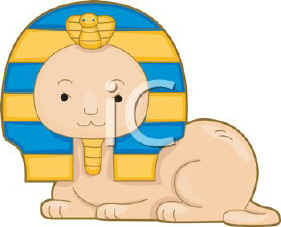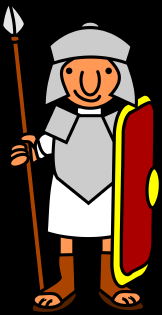 What
is the most basic kind of time, the time that was
around long before we were, before sun dials, water clocks, hour glasses
and sand clocks?
What
is the most basic kind of time, the time that was
around long before we were, before sun dials, water clocks, hour glasses
and sand clocks?
| BEALE:
I want you to go to the window, open it, stick your head out and
yell: "I'm as mad as hell, and I'm not going to take this
anymore!"
Network |
D Vautier
5/2019
 What
is the most basic kind of time, the time that was
around long before we were, before sun dials, water clocks, hour glasses
and sand clocks?
What
is the most basic kind of time, the time that was
around long before we were, before sun dials, water clocks, hour glasses
and sand clocks?
Sidereal time or star time, is a clock that runs a little bit faster than earth time but very accurately and we can observe it without use of instruments or special devices. A sidereal year is exactly one day longer than an earth year. It is 366.244 days instead of 365.244 because it needs to consider the one earth revolution as well as the 365 earth rotations. 23 hours 56 minutes and 4.1 seconds makes up exactly one sidereal day. The earth is moving in orbit and causing the celestial background to shift a little bit each time. This phenomenon can be easily observed by noticing that a star consistently disappears a few minutes earlier each night, or I should say 3 minutes 55.9 seconds earlier each night.
I have often wondered what is the purpose of sidereal time other than for abstract calculations of transit and occultation times and other esoteric celestial events that astronomers care about. It seemed all very inimportant and far removed from practical use but in today’s world sidereal time makes a lot more sense than it used to. Any expensive telescope has a computer that runs on sidereal time and if the user wishes to locate a heavenly body they just have to key in the name of what they want to see. The telescope does the rest.
Star mapping uses a whole different setup than earth mapping. Since stars are in fixed positions the map layout is somewhat similar to earth but different as I explain here.
 Egyptian
astronomers had already determined long ago that the length of a year
was 365 ¼ days. They discovered this most likely as early as before the
third dynasty during the reign of Djoser in 2700 BCE. This seems
apparent because his chief architect Imhotep was able to employ and feed
large crews for pyramid construction, a job that necessitated a
guaranteed harvest year after year. Regular food supplies could only be acquired by
using an
accurate farming calendar. In
fact the Egyptians had a longstanding reputation of good farming and
consistent food production. This is documented in the Bible when
the Israelites had to go to Egypt around 1450 BCE or face starvation.
Egyptian
astronomers had already determined long ago that the length of a year
was 365 ¼ days. They discovered this most likely as early as before the
third dynasty during the reign of Djoser in 2700 BCE. This seems
apparent because his chief architect Imhotep was able to employ and feed
large crews for pyramid construction, a job that necessitated a
guaranteed harvest year after year. Regular food supplies could only be acquired by
using an
accurate farming calendar. In
fact the Egyptians had a longstanding reputation of good farming and
consistent food production. This is documented in the Bible when
the Israelites had to go to Egypt around 1450 BCE or face starvation.
Astronomers used Sirius the “dog star” as their key marker. They observed that the simultaneous rising of Sirius and the sun happened regularly every 365 days*. They also noticed that every 4 years Sirius was a day late. When this event occurred the priests declared the beginning of a new year which was very important to Egypt because farmers needed an accurate yearly calendar to grow crops.
 Egypt
at that time used two
calendars, one for farming and another for the Pharaohs to keep track of
matters of state. The farming calendar was 365 ¼ days long and the
royal calendar was just 365 days so it fell behind one day every four
years and recycled itself every 1460 years. Apparently Pharaohs were not
much into fractions.
Egypt
at that time used two
calendars, one for farming and another for the Pharaohs to keep track of
matters of state. The farming calendar was 365 ¼ days long and the
royal calendar was just 365 days so it fell behind one day every four
years and recycled itself every 1460 years. Apparently Pharaohs were not
much into fractions.
Egypt had three seasons four months each, the Inundation, the Planting and the Harvesting. The Inundation began in June, the first month of their year when the Nile began flooding and the ground around the delta was way too soggy to plant. October through January planting was done. Harvesting then began and continued from February through May.
The Pharaohs didn’t bother with trivial details like growing crops and food but simply continued to use calendars with 365 days. Each new king began counting from the beginning of his reign. Every 1460 years both calendars were correct.
 Before
45 BCE the Roman calendar was sort of a lunar based thing starting in March and
using 12 lunar months of 29 days each. At the end of each year they added 17 or 18 days or so, but after
awhile things went array and March did not start anywhere near the
spring equinox. This confusing system did not make the farmers
very happy and after 700 years the calendar became totally useless.
Julius Caesar (Jenkins, 34) determined that something reliable was
needed based on a yearly cycle that began with the planting season, that
is, the
vernal equinox in March and would correspond with the planting and
harvesting seasons. He
consulted a Greek astronomer, Sosigens who designed our present
calendar. But the year 46
BCE needed another 80 days added to it to bring March in line with where
it should be. A leap year
was added every four years.
Before
45 BCE the Roman calendar was sort of a lunar based thing starting in March and
using 12 lunar months of 29 days each. At the end of each year they added 17 or 18 days or so, but after
awhile things went array and March did not start anywhere near the
spring equinox. This confusing system did not make the farmers
very happy and after 700 years the calendar became totally useless.
Julius Caesar (Jenkins, 34) determined that something reliable was
needed based on a yearly cycle that began with the planting season, that
is, the
vernal equinox in March and would correspond with the planting and
harvesting seasons. He
consulted a Greek astronomer, Sosigens who designed our present
calendar. But the year 46
BCE needed another 80 days added to it to bring March in line with where
it should be. A leap year
was added every four years.
There were other finer adjustments made to the Roman calendar in 1582 by Pope Gregory but otherwise it remains much the way Sosigens designed it.
As for all the other odds-and-ends of time like minutes, hours and degrees, we can thank the Babylonians for that. They were fond of numbers like 12, 60 and 360 that were cleanly devisable into smaller equal units for work or play or games or convenience. Fortunately they did not count on their fingers like the Romans did but wanted things like hours and degrees easily divisible into many smaller units. The Romans tried a 10 hour day but had to add two more hours for obviously practical reasons.
* This event happens on July 7, but it is impossible to see Sirius when the sun rises because the sun is too bright. About 12 days later Sirius becomes visible. The Egyptians figured all this out.